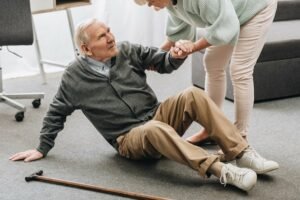Age-related hearing loss, or presbycusis, is a hearing loss that happens to people as they age. This type of hearing loss occurs as the tiny hair cells within the inner ear experience damage. These cells do not regrow, so the hearing loss is permanent. This type of hearing loss occurs over time, and various changes within the inner ear can cause the problem. Deviations in the structure of the inner ear, changes in blood flow to the ear, or impairment in the nerves may be factors. There is no single source of age-related hearing loss, but the following factors may be involved:
- Family history
- Repeated exposure to loud noise
- Smoking
- Medical conditions
- Medications
Now, researchers at the University of Virginia School of Medicine have identified a new contributing factor to age-related hearing loss. This new finding may help identify people at risk for age-related hearing loss.
New Contributor To Age-Related Hearing Loss
A new study by a team from the University of Virginia School of Medicine is examining a new contributor to age-related hearing loss. Receptors in the inner ear, called hair cells pick up sounds using a vibration-sensing antenna and relay them to the brain. A large amount of research exists on the function of the antenna. This new study is focusing on the cuticular plate which is the foundation on which the vibration-sensing antenna stand. Research findings indicate that a genetic predisposition can cause the plate to weaken over time. These defects lead to progressive hearing loss.
Before this study, examiners lacked the tools for examing the workings of the cuticular plate. So, the team utilized innovation for the investigation. The group, using a protein particular to the cuticular plate, was able to conclude that the gene Lmo7 is critical for the plate’s long-term stability in mice. Age-related hearing loss then developed in the mice without the Lmo7 protein. The absence of the Lmo7 protein is recognized, and the function of the plate declines. Lmo7 exists in all vertebrates, not just the study mice. The examiners feel that any mutations in Lmo7 in humans may lead to age-related hearing loss.
Helping People Hear Better With Early Hearing Loss Detection
The researchers are aware that age-related hearing loss is the product of many factors including loud noises and certain drugs. However, the evidence now demonstrates that Lmo7 may undoubtedly play a role. The researchers believe that screening patients to determine their genetic risk will eventually become a reality. They feel that advance knowledge will provide people with the opportunity to prepare themselves by minimizing other risk factors and even getting fitted with hearing aids at the first sign of hearing loss. Advance knowledge can also help prevent or lessen the consequences of dementia that often accompanies a hearing loss. The team plans to continue examining the effects of Lmo7 and how genetic risk is associated with other risk influences such as exposure to noise.



